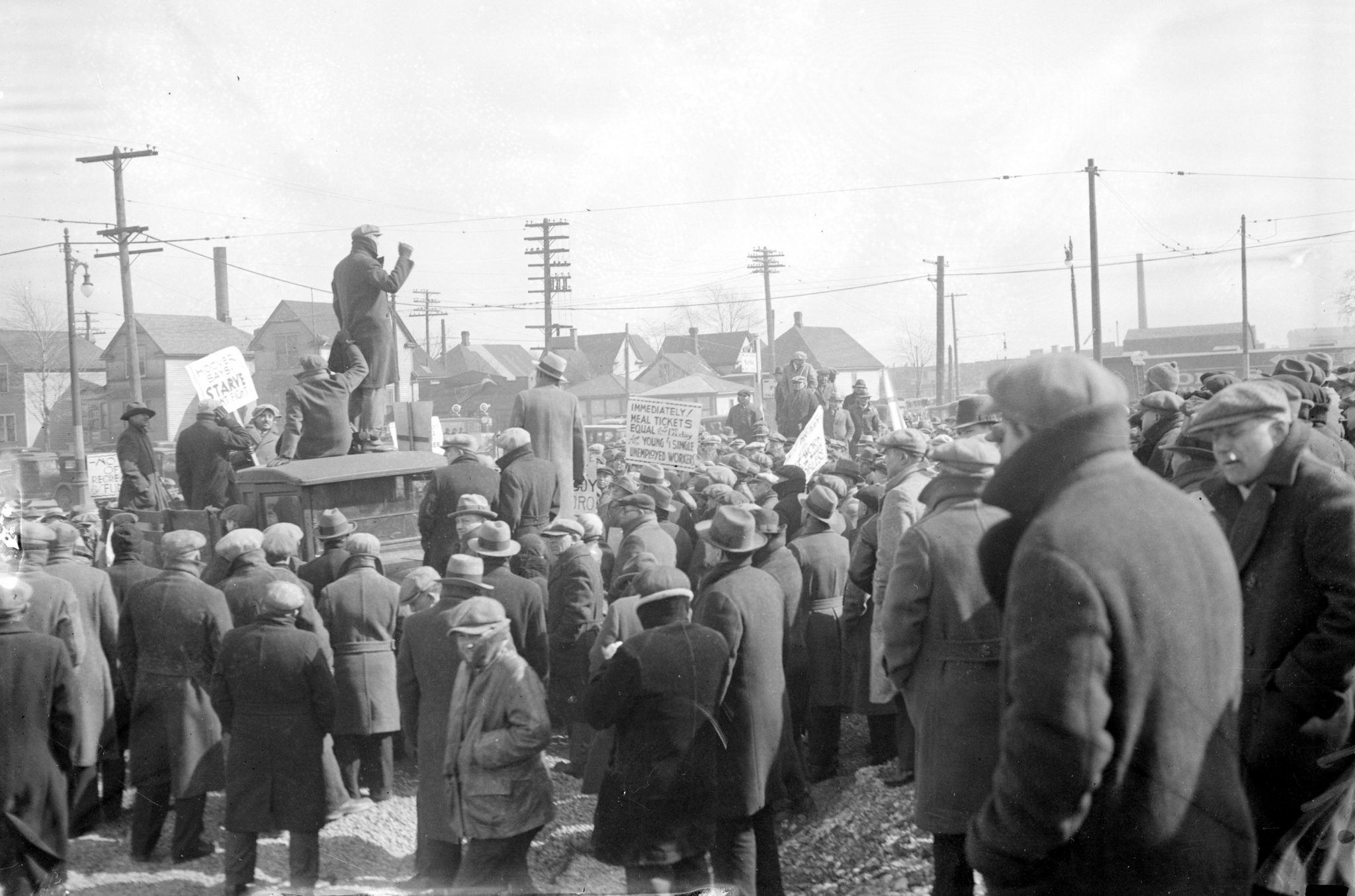CuriosiD: What was the 1932 Ford Hunger March?
This week’s installment of CuriosiD looks at 1930s Detroit poverty and the events surrounding the “Ford Massacre”

For this edition of CuriosiD, we tackle a question from Danielle Kaltz of Detroit. Click on the audio player above or use this link to hear the audio story.
“What was the 1932 Ford Hunger March, and are there any parallels between regional poverty today and in the 1930s?”
The Short Answer
The Ford Hunger March, also known as the Ford Massacre, was a demonstration held on March 7, 1932 by unemployed workers. The march stretched from Detroit to Dearborn, specifically to the Ford River Rouge Complex – Ford’s largest factory and the largest in the world at the time.
The Hunger March resulted in four workers being shot and killed by Dearborn police and Ford Motor Company security guards. A few months later a fifth person died of his injuries. In the end, over 60 workers were injured.
In Detroit, at the time, nearly half of workers were unemployed. Today, Detroit’s unemployment rate is roughtly 10 percent.
Detroit in the 1930s
Mike Smith, Archivist for the Michigan Historical Collections at the University of Michigan’s Bentley Historical Library, painted a picture for us of Detroit in the 1930s.
It was the depths of the Great Depression. The stock market had crashed just a few years before in October 1929, and the national unemployment rate was 25 percent, which is about double of what we had in this recent recession.
In Detroit, roughly half of all workers were unemployed.
“This is the the southwest, the L.A., of the twentieth century,” says Smith. “In 1900, there were 286,000 people. At the time of the depression in 1929, we had 1.6 million – and the key thing is, tied to the automobile industry.”
That means when the auto industry lost sales, many people lost work.
Organizing in the Wake of Poverty
As people began protesting the horrid financial conditions, they started to organize demonstrations. In metro Detroit, the Young Communist League and the Detroit Unemployed Council organized a Hunger March.
“At this time, unions are small in Detroit,” says Smith. “This was also the era where people were looking for political alternatives such as socialism or communism. … There is no government support, there is no government welfare or government social security.”
The public either saw the organizers as people searching for a solution and jobs, or as radicals and militants.
Regardless, the mayor of Detroit, Frank Murphy, was in favor of letting the workers march- and they did.
The Hunger March
According to a case study by labor lawyer Maurice Sugar, on March 7, 1932, the Hunger Marchers gathered in Detroit at a location one block from the city limits and about a mile from the plant.
It was a 30- or 40-minute walk. The crowd grew slowly, swelling as groups of unemployed Ford workers began to arrive. Students showed up, and a large number of Ford workers who had been laid off that very day joined in. There were suddenly thousands of people, ready to Hunger March and present their demands to Henry Ford.
Their demands looked included the following:
- Jobs for all laid-off Ford workers
- Immediate payment of 50 percent of all wages
- Free medical aid in the Ford Hospital for all employed and unemployed Ford workers and their families
- Abolition of servicemen
- No foreclosure on the homes of former Ford workers
- Full wages for part-time workers
Although it wasn’t a union event, it took on the tone of an organized labor protest, more than a hunger march by the unemployed. When the group approached the Dearborn city limits, they were met by about 50 police officers using tear gas and Ford’s private security force.
Police at that time had little training in crowd control. After police began to fill the air with tear gas, the workers fought back by throwing stones at oncoming officers.
Police responded with gun shots while firefighters blasted water from powerful hoses at the Hunger Marchers. A siege developed, and union leaders and the unemployed council called off the demonstration.
Everyone arrested was a worker. Not a single police officer received a bullet wound.
The Aftermath
The press vilified the Hunger Marchers as communist radicals. But Henry Ford was already unpopular among some middle class workers. Despite news reports, popular opinion was on the side of those who participated in the Hunger March.
After the Hunger March, Ford employees were forbidden to even talk to each other before starting work and during lunch breaks at the Ford plant.
Within a few days of the Hunger March, Ford discharged thousands of workers. If there was any suspicion that a worker was even sympathetic to the Hunger Marchers’ cause, they were let go.
If you’re on the shop floor in 1935, and you start speaking about labor organizing, you were escorted out,” Smith says. “In fact, Henry Ford was the last of the Big Three to organize. Ironically, he gave the UAW its best contract, because if he was going to organize he didn’t want to be outdone by GM or Chrysler.”
